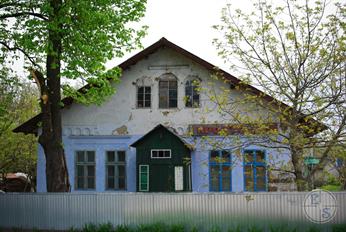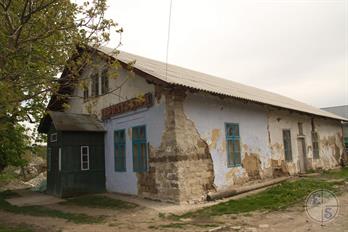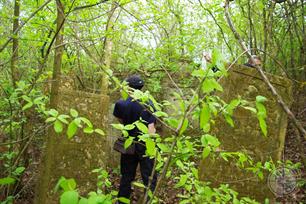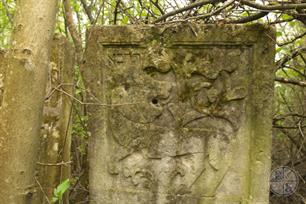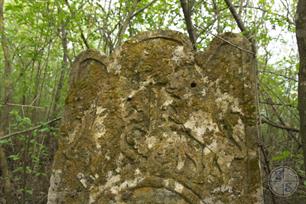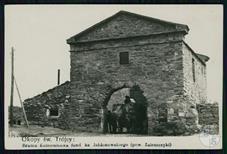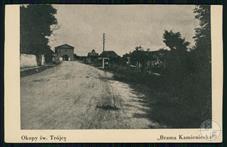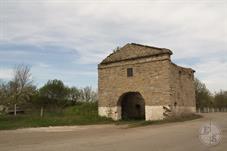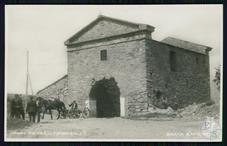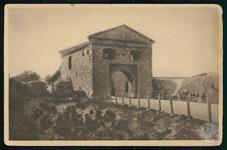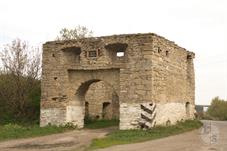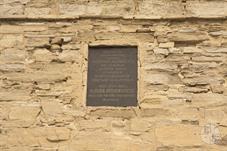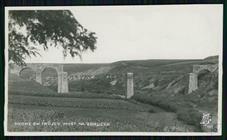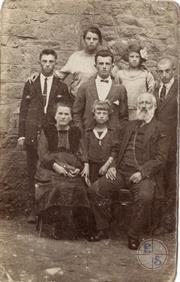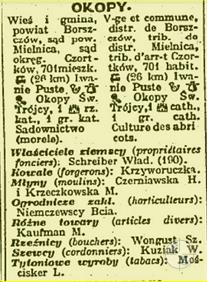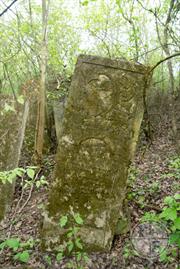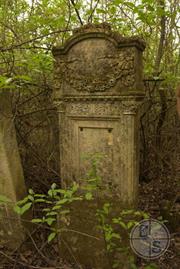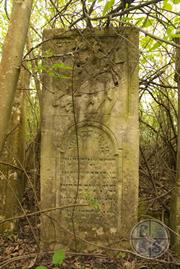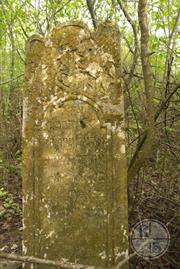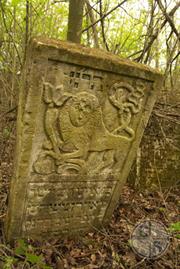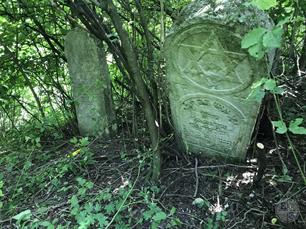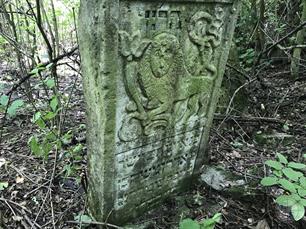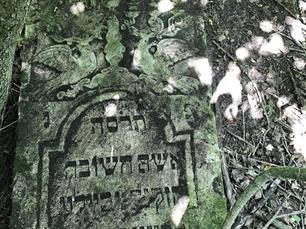Okopy
Chortkiv district, Ternopil region
Sources:
- Rivka S. Moscisker. The People of Okopy Swietej Trojcy
- Pinkas Hakehillot Polin: Encyclopedia of Jewish Communities, Poland, Volume II, published by Yad Vashem, Jerusalem.
Photo:
- Eugene Shnaider
- Hryhoriy Arshynov, European Jewish Cemeteries Initiative. Okopy Jewish Cemetery
- The Center for Jewish Art
- Rivka S. Moscisker. The People of Okopy Swietej Trojcy
- Pinkas Hakehillot Polin: Encyclopedia of Jewish Communities, Poland, Volume II, published by Yad Vashem, Jerusalem.
Photo:
- Eugene Shnaider
- Hryhoriy Arshynov, European Jewish Cemeteries Initiative. Okopy Jewish Cemetery
- The Center for Jewish Art
Okopy (ukr. Окопи), the village in Ternopil region. In the 19th - early 20th centuries - in the province of Galicia in Austria-Hungary. In 1919–39 - as part of Poland, in 1939–91 - the Ukrainian SSR.
The fortress, called the Trenches (ukr. Okopy) of the Holy Trinity, was laid in 1692 to protect against the raids of the Crimean Tatars by the Polish hetman Stanislav Yablonovsky.
It was not possible to find any specific information about Jewish life in Okopy. It is known that at the turn of the 19-20 centuries, 17 people (2%) of the inhabitants of Okopy were Catholics, 542 (76%) - Greek Catholics and 157 (22%) were Jews.
The fortress, called the Trenches (ukr. Okopy) of the Holy Trinity, was laid in 1692 to protect against the raids of the Crimean Tatars by the Polish hetman Stanislav Yablonovsky.
It was not possible to find any specific information about Jewish life in Okopy. It is known that at the turn of the 19-20 centuries, 17 people (2%) of the inhabitants of Okopy were Catholics, 542 (76%) - Greek Catholics and 157 (22%) were Jews.
In 1698 the founder of Chassidism, Rabbi Israel ben Eliezer, better known as The Ba'al Shem Tov (“he of good reputation”), was born in Okopy Swietej Trojcy.
It is said that when he was orphaned at an early age, the Ba’al Shem Tov’s community cared for him. At school, he is said to have distinguished himself mainly by his frequent absences, so his benefactors made him a "helper", one who took the children to and from school and rehearsed short benedictions and prayers with them. Later he became the shammash (sexton, synagogue officer charged with the maintenance of its buildings).
It is said that when he was orphaned at an early age, the Ba’al Shem Tov’s community cared for him. At school, he is said to have distinguished himself mainly by his frequent absences, so his benefactors made him a "helper", one who took the children to and from school and rehearsed short benedictions and prayers with them. Later he became the shammash (sexton, synagogue officer charged with the maintenance of its buildings).
The largest were 3 Jewish families - Helmans, Weissmans and Reinsteins, they made up 36% of the total Jewish population. These three families intermarried regularly, especially the Reinsteins with the Weissmanns.
One branch of the Reinstein family intermarried with the Amcies family well into the 20th century (and the first Amcies to have immigrated to the USA have modified the spelling to Amcis).
Thirty-three other families (composed of two to eight members each) represented, together, 54,5% of the Jewish population. The remaining 9,5% of the Jewish population was composed of individuals seemingly unrelated to any of the local families.
One branch of the Reinstein family intermarried with the Amcies family well into the 20th century (and the first Amcies to have immigrated to the USA have modified the spelling to Amcis).
Thirty-three other families (composed of two to eight members each) represented, together, 54,5% of the Jewish population. The remaining 9,5% of the Jewish population was composed of individuals seemingly unrelated to any of the local families.
By 1927, according to the Polish Business Directory of that year, there were 701 inhabitants in Okopy Swietej Trojcy. There was one landowner (W.Schreiber, who owned 190 hectares), one blacksmith, two flour mill owners, one horticulturist, one butcher, one shoemaker, one owner of a shop of variety goods and one tobacco shop owner.
The ethnic split in Okopy Swietej Trojcy in 1921 was 77% Ruthenians, 12% Poles and 11% Jews.
However, judging only by their surnames, it would seem that of the 7 professionals listed in 1927, only one (14%) – the shoemaker, Kuziak - was Ruthenian, four (57%) were ethnic Poles and two (28,6%) were Jews – M.Kaufman, the owner of the variety shop and L.Moscisker, the owner of the tobacco shop. The latter also owned a small piece of land and, together with his wife, Genendel-Feige (aka Genia), ran small beer shop for the villagers and a small restaurant for the summer vacationers.
In the 1920’s and 1930's there was also at least one Jewish butcher, Mosze Reinstein (Rajnsztajn), as testified by his cousin, a Holocaust survivor, in a Page of Testimony deposited at Yad Vashem.
According to all four village elders interviewed in June 2010, Moscisker Stare continued to own his “poob” and sell beer to the villagers even under Soviet (communist) occupation.
The ethnic split in Okopy Swietej Trojcy in 1921 was 77% Ruthenians, 12% Poles and 11% Jews.
However, judging only by their surnames, it would seem that of the 7 professionals listed in 1927, only one (14%) – the shoemaker, Kuziak - was Ruthenian, four (57%) were ethnic Poles and two (28,6%) were Jews – M.Kaufman, the owner of the variety shop and L.Moscisker, the owner of the tobacco shop. The latter also owned a small piece of land and, together with his wife, Genendel-Feige (aka Genia), ran small beer shop for the villagers and a small restaurant for the summer vacationers.
In the 1920’s and 1930's there was also at least one Jewish butcher, Mosze Reinstein (Rajnsztajn), as testified by his cousin, a Holocaust survivor, in a Page of Testimony deposited at Yad Vashem.
According to all four village elders interviewed in June 2010, Moscisker Stare continued to own his “poob” and sell beer to the villagers even under Soviet (communist) occupation.
In the spring of 1942, “a terribly cold spring” the 40 Jewish families of Okopy were marched to Mielnica, some 19 kilometers westwards. They were joined there by the Jews of other neighbouring villages. In Mielnica, Mikolai said, they were all herded into a ghetto.
About the liquidation of the ghetto of Mielnica, Pinkas Hakehilot (Encylopaedia of Jewish Communities), Poland, Vol. II: Eastern Galicia (published by YAd Vashem, Jerusalem, 1980) says the following:
On September 26, 1942 (the first day of Sukkot 5703), the ghetto of Mielnica was liquidated by Gestapo men from Chorostkow and the local Ukrainian police. The Jews were concentrated in the marketplace and were made to kneel with their hands on their necks. The sick, the weak, the handicapped, those who had hidden out and those who tried to escape were summarily murdered in situ.
Some 100-300 persons were thus killed in Milenica itself. From the marketplace the Jews were marched to the railroad station of Iwanie-Puste, 3.7 kilometers away. Some wagons transported those who could not walk fast. From this station they were deported to Belzec extermination camp. During the Liquidation Akcja, the Ukrainian rabble actively participated in the hunt for hiding Jews.
About the liquidation of the ghetto of Mielnica, Pinkas Hakehilot (Encylopaedia of Jewish Communities), Poland, Vol. II: Eastern Galicia (published by YAd Vashem, Jerusalem, 1980) says the following:
On September 26, 1942 (the first day of Sukkot 5703), the ghetto of Mielnica was liquidated by Gestapo men from Chorostkow and the local Ukrainian police. The Jews were concentrated in the marketplace and were made to kneel with their hands on their necks. The sick, the weak, the handicapped, those who had hidden out and those who tried to escape were summarily murdered in situ.
Some 100-300 persons were thus killed in Milenica itself. From the marketplace the Jews were marched to the railroad station of Iwanie-Puste, 3.7 kilometers away. Some wagons transported those who could not walk fast. From this station they were deported to Belzec extermination camp. During the Liquidation Akcja, the Ukrainian rabble actively participated in the hunt for hiding Jews.

- Home
- Shtetls
- Vinnytsia region
- Volyn region
- Dnipro region
- Donetsk region
- Zhytomyr region
- Zakarpattia region
- Zaporizhzhia region
- Ivano-Frankivsk region
- Kyiv region
- Kropyvnytskyi region
- Luhansk region
- Lviv region
- Mykolayiv region
- Odessa region
- Poltava region
- Rivne region
- Sumy region
- Ternopil region
- Kharkiv region
- Kherson region
- Khmelnytskyi region
- Chernihiv region
- Chernivtsi region
- Cherkasy region
- Crimea
- Synagogues
- Cemeteries
- Objects & guides
- Gallery
- History
- Contact
Jewish towns of Ukraine
Jewish towns of Ukraine
My shtetl
My shtetl
Donate
